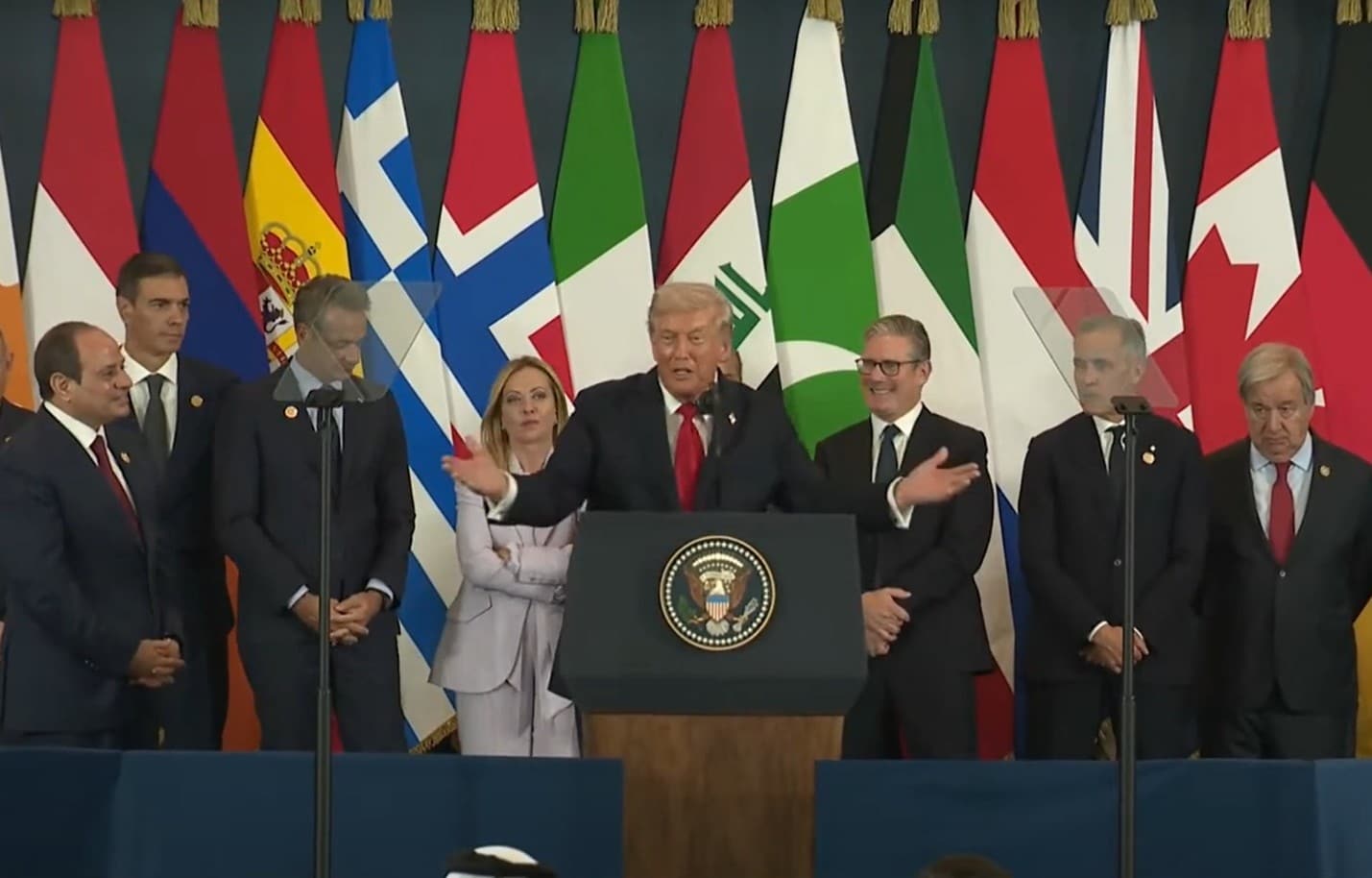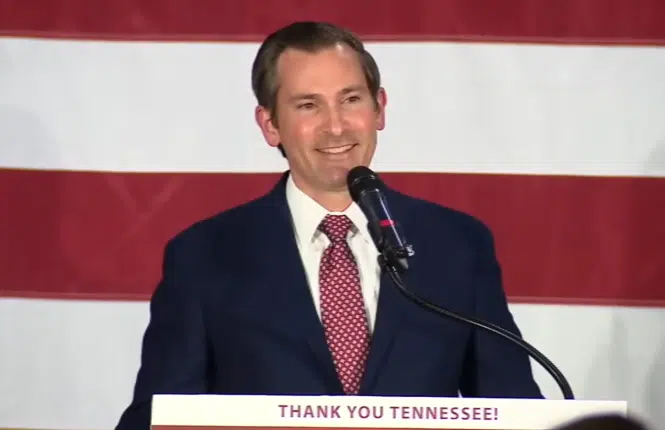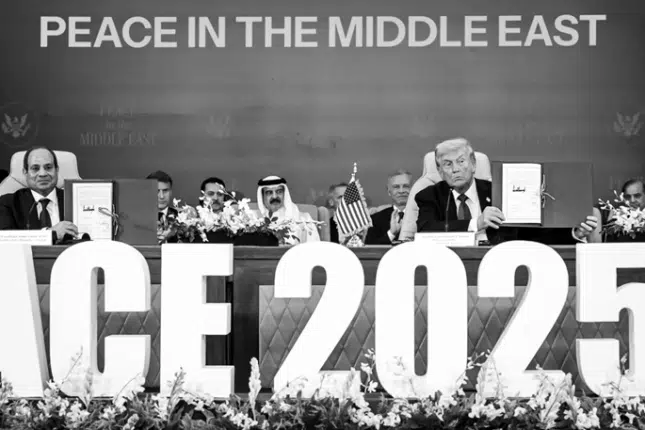
President Donald Trump safely returned from his historic trip to Israel and Egypt to put the finishing touches on his 20-point peace plan that ended the war between Israel and Hamas that began on Oct. 7, 2023, marked by the return of the 20 living hostages on Oct. 13, 2025 who were being held by Hamas, Israeli defense forces’ withdrawal to the agreed line and the beginning of the prisoner exchange of capture Hamas forces. The ceasefire is holding — for now.
President Trump spoke at the Israeli parliament — the Knesset — in Jerusalem and then traveled to Egypt to sign another agreement with Egypt, Qatar and Turkey at Sharm el-Sheikh, agreeing to implement the peace plan. The implementation agreement states:
“We, the undersigned, welcome the truly historic commitment and implementation by all parties to the Trump Peace Agreement, ending more than two years of profound suffering and loss — opening a new chapter for the region defined by hope, security, and a shared vision for peace and prosperity.
“We support and stand behind President Trump’s sincere efforts to end the war in Gaza and bring lasting peace to the Middle East. Together, we will implement this agreement in a manner that ensures peace, security, stability, and opportunity for all peoples of the region, including both Palestinians and Israelis.
“We understand that lasting peace will be one in which both Palestinians and Israelis can prosper with their fundamental human rights protected, their security guaranteed, and their dignity upheld.
“We affirm that meaningful progress emerges through cooperation and sustained dialogue, and that strengthening bonds among nations and peoples serves the enduring interests of regional and global peace and stability.
“We recognize the deep historical and spiritual significance of this region to the faith communities whose roots are intertwined with the land of the region — Christianity, Islam, and Judaism among them. Respect for these sacred connections and the protection of their heritage sites shall remain paramount in our commitment to peaceful coexistence.
“We are united in our determination to dismantle extremism and radicalization in all its forms. No society can flourish when violence and racism is normalized, or when radical ideologies threaten the fabric of civil life. We commit to addressing the conditions that enable extremism and to promoting education, opportunity, and mutual respect as foundations for lasting peace.
“We hereby commit to the resolution of future disputes through diplomatic engagement and negotiation rather than through force or protracted conflict. We acknowledge that the Middle East cannot endure a persistent cycle of prolonged warfare, stalled negotiations, or the fragmentary, incomplete, or selective application of successfully negotiated terms. The tragedies witnessed over the past two years must serve as an urgent reminder that future generations deserve better than the failures of the past.
“We seek tolerance, dignity, and equal opportunity for every person, ensuring this region is a place where all can pursue their aspirations in peace, security, and economic prosperity, regardless of race, faith, or ethnicity.
“We pursue a comprehensive vision of peace, security, and shared prosperity in the region, grounded in the principles of mutual respect and shared destiny.
“In this spirit, we welcome the progress achieved in establishing comprehensive and durable peace arrangements in the Gaza Strip, as well as the friendly and mutually beneficial relationship between Israel and its regional neighbors. We pledge to work collectively to implement and sustain this legacy, building institutional foundations upon which future generations may thrive together in peace.
“We commit ourselves to a future of enduring peace.”
This is significant buy-in by regional partners, who now have a stake in the fate of Gaza, which per the peace plan, will now be governed by the so-called Board of Peace. According to the text of the plan released by the White House, “Gaza will be governed under the temporary transitional governance of a technocratic, apolitical Palestinian committee, responsible for delivering the day-to-day running of public services and municipalities for the people in Gaza. This committee will be made up of qualified Palestinians and international experts, with oversight and supervision by a new international transitional body, the ‘Board of Peace,’ which will be headed and chaired by President Donald J. Trump, with other members and heads of State to be announced, including Former Prime Minister Tony Blair. This body will set the framework and handle the funding for the redevelopment of Gaza until such time as the Palestinian Authority has completed its reform program, as outlined in various proposals, including President Trump’s peace plan in 2020 and the Saudi-French proposal, and can securely and effectively take back control of Gaza. This body will call on best international standards to create modern and efficient governance that serves the people of Gaza and is conducive to attracting investment.”
To oversee the implementation, U.S. forces from Central Command (CENTCOM) will be stationed in Israel, while the other three parties of the implementation agreement, Egypt, Qatar and Turkey, will be on the ground in Gaza. Both Israel and Hamas agreed to this.
In effect, the U.S. under President Trump’s direction and coordination with other members of the Board of Peace, will be overseeing the security and then rebuilding of Gaza, which was largely destroyed during the war.
At his speech at Sharm el-Sheikh on Oct. 13, Trump said that some of the leaders attending the peace summit would be members of the Board: “we’re going to put some of you on the Board of Peace. Everybody wants to be on the Board of Peace. They said, would you be the chairman? I say, I’m pretty busy too, but whatever we can do to have peace in the Middle East, it’s worth it. But everybody wants to go on the Board of Peace. So we’re probably going to enlarge it. We’re going to get, and the leaders, the top people, the top leaders, they want to be on the Board of Peace. A beautiful, a beautiful term. At first, I wasn’t sure, and then I realized how beautiful it is. And for the people of Gaza, the focus now must be on restoring the basics of a good life. We’re going to have a lot of money coming into Gaza and a lot of rebuilding and building. It’s not so much rebuilding. It’s really building, cleaning up and building. And I’m pleased to announce that numerous countries of great wealth and power and dignity have come forward to me just today and over the last week to say they want to help in the reconstruction of Gaza, putting up whatever money is necessary. And the money is, of course, it’s a lot of money, but it’s not much compared to the value or the wealth of these tremendous countries.”
But how was this all possible when just days ago, both sides were engaged in intense fighting? It took a show of force including the destruction of Iran’s nuclear weapons program on June 22 — and the promise of total annihilation of Hamas by Trump on Oct. 3 if they did not give the hostages back. This or that. Life or death.
Now, with the living hostages returned and efforts underway to recover the remains of those who died in captivity, the ceasefire holding and the military withdrawal from Hamas, the choice was life.
But there are major points on the peace plan to be adopted, namely, the disarmament of Hamas: “Gaza will be a deradicalized terror-free zone that does not pose a threat to its neighbors… Once all hostages are returned, Hamas members who commit to peaceful co-existence and to decommission their weapons will be given amnesty.” They have to surrender. No more Hamas.
It could be a smooth end to the war — hope springs eternal. That’d be nice. However, it seems likely that not everyone will know how to stop the fighting.
The difference is now there’s a new sheriff in town, so, one way or another Hamas will be disarmed and then the rebuilding of Gaza will commence under international supervision with Trump chairing the Board of Peace. It’s the President’s peace — and he appears determined to keep it.
Robert Romano is the Executive Director of Americans for Limited Government Foundation.






